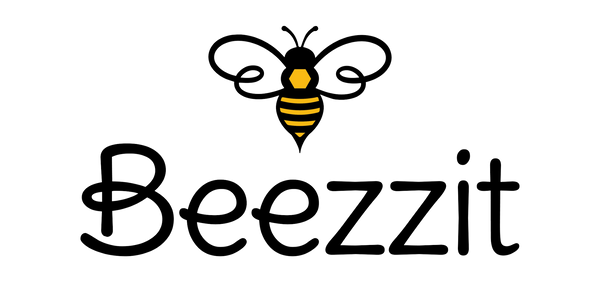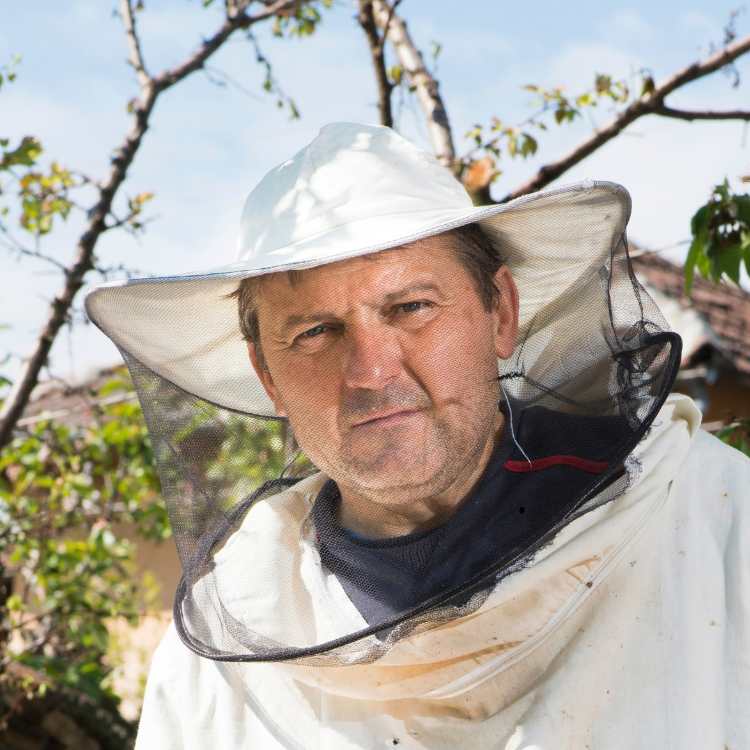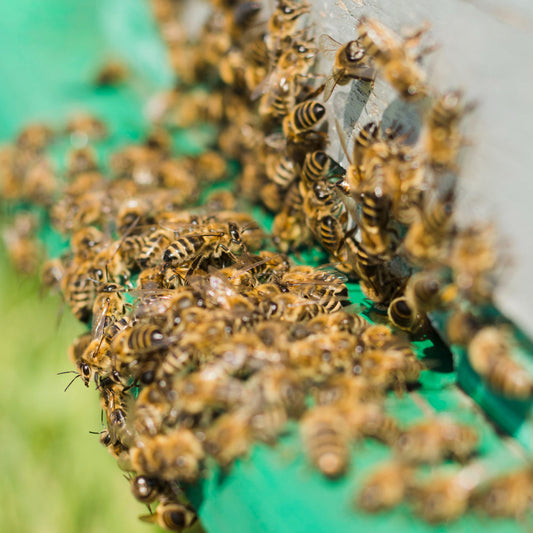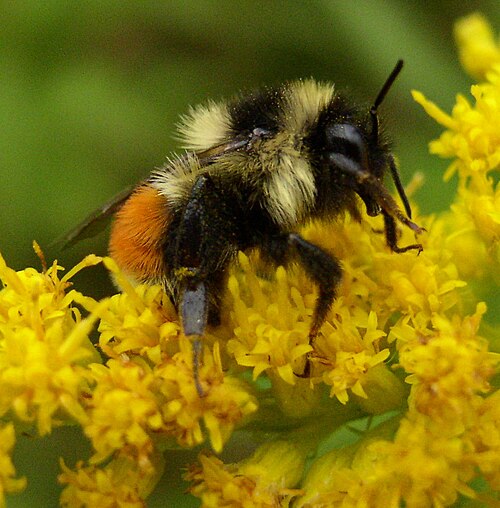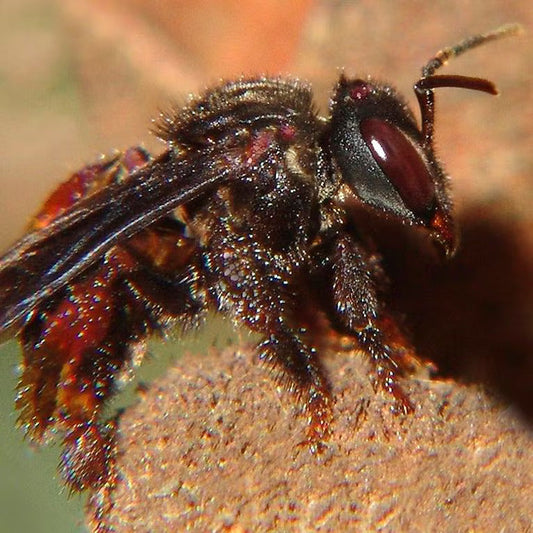Ever noticed a honeybee fleeting across your garden? You must have. But have you really watched what they are up to? If you look closely, you will find that they seem particularly drawn towards blue and purple flowers. But why is that? It can’t be a coincidence. What’s so special about these colors that makes them irresistible to our buzzing little pollinators?
Well, it turns out there’s some fascinating science to explore behind it. Let’s understand why bees have a stronger preference for these cool-toned blooms.
How do bees see the world?
There is quite a huge difference in how bees perceive the world. While we humans have three types of color receptors-red, green, and blue- bees have photoreceptors that are most sensitive to ultraviolet, blue, and green light. What this means is that while red appears super dull or even invisible to them, they can pick up on ultraviolet patterns that we cannot see at all.
Many flowers have evolved to take advantage of this and have developed ultraviolet markings on them that act as landing strips to guide the bees right to the nectar. Blue and purple flowers, in particular, often reflect UV light in ways that make them highly noticeable to bees.
The science behind this color interaction
Beyond how they see, bees are also drawn to these colors because of the rewards they offer. Several studies have shown that flowers whose colors lie in the blue to purple spectrum often tend to produce more nectar than other color flowers. And since bees are practical creatures, they naturally gravitate towards flowers that provide the biggest energy payoffs.
Another interesting phenomenon to note is that there’s more to it than just nectar. Many flowers that depend on bees for pollination have evolved tiny nanoscale structures on their petals that create a special effect called the blue halo. Under light, these microscopic ridges make the flowers appear even more vibrant to the bees. A fascinating physics trick that helps blue and purple flowers stand out among the sea of green foliage.

The flower loyalty
Bees are also known to be extremely loyal to the flowers they visit. This is what you call flower consistency. What this means is that once a bee finds a particular variety of flowers that it like, they will continue to visit the species until the nectar and pollen are exhausted before moving on to a new one. This behavior of bees makes them super efficient pollinators that help flowers of the same species get pollinated more effectively.
So, when bees find a patch of blue and purple flowers that they love, they will keep coming back to make those plants particularly successful at reproducing and spreading their seeds.
What blue and purple flowers can you plant for bees?
Planting blue and purple blooms in your garden is a sure shot way to attract more bees. Plus, these also look stunning and make your garden colorful. Here are some common choices that you might consider.
For spring:
- Forget-Me-Nots (Myosotis sylvatica): A delicate blue flower that bees absolutely love.
- Blue Giant Glory-of-the-Snow (Chionodoxa forbesii): One of the first spring bloomers, this is an ideal choice to give bees an early spring foraging source.
- Grape Hyacinth (Muscari armeniacum): These flowers are quite small but are an excellent source of nectar.
- Lungwort (Pulmonaria sp.): Comes with striking blue flowers, which is a magnet for early pollinators.
For summer:
- Salvia (Salvia memorosa & Salvia officinalis): Very aromatic flowers that not only attract bees but are also a great herb for your kitchen.
- Catmint (Nepeta sp.): A summertime favorite for bees.
- Borage (Borago officinalis): Often dubbed as the bee’s best friend, borage flowers are a renewable supply of nectar for the bees.
- Love-in-a-Mist (Nigella damascena): A stunning looking plant that is an excellent source of pollen for the bees.
For late summer and fall:
- Globe Thistle (Echinops sp.): A spiky blue flower that is irresistible to pollinators.
- Russian Sage (Perovskia atriplicifolia): A great long lasting source of nectar late into the season.
- Bachelor’s Button (Centaurea cyanus): Charming wildflowers that bloom well into the fall to keep the bees well-fed before winter.
- Blue Mist Bust (Caryopteris x clandonesis): A wonderful shrub for late-season nectar.

A bumblebee foraging from a blue flower
Create a bee friendly garden
For those of you who are looking to create a safe haven for the bees right in your backyard, here are a few simple tips to make it more bee friendly.
- Plants flowers in a cluster since bees prefer to visit a patch of the same flower type.
- Try to have flowers that are available throughout the seasons to support the bees year-round.
- Say no to pesticides. Instead, opt for organic alternatives.
- Offer a water source, like a shallow dish, to help the bees stay hydrated.
Final thoughts
There is simply no doubt that bees are incredibly important for pollination, and blue and purple flowers have emerged as being their favorite nectar flavor. By planting these plants in your garden, not only are you adding a striking contrast to your garden but also doing your part to save the bees. So the next time you see a bee buzzing happily around a patch of lavender or salvia, you will know exactly why.
Love to learn striking facts about bees and beekeeping? Learn more from our full blog here.
